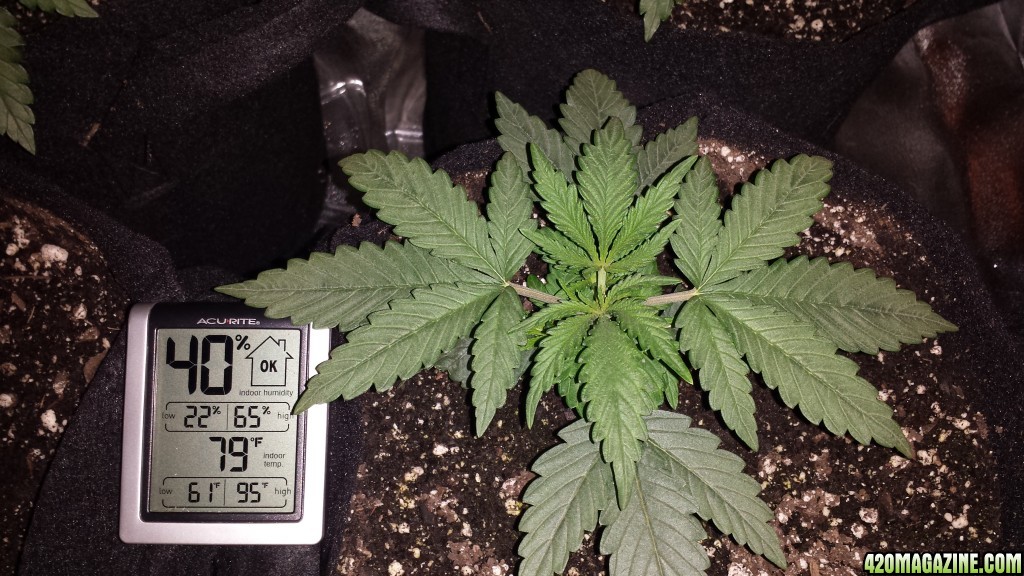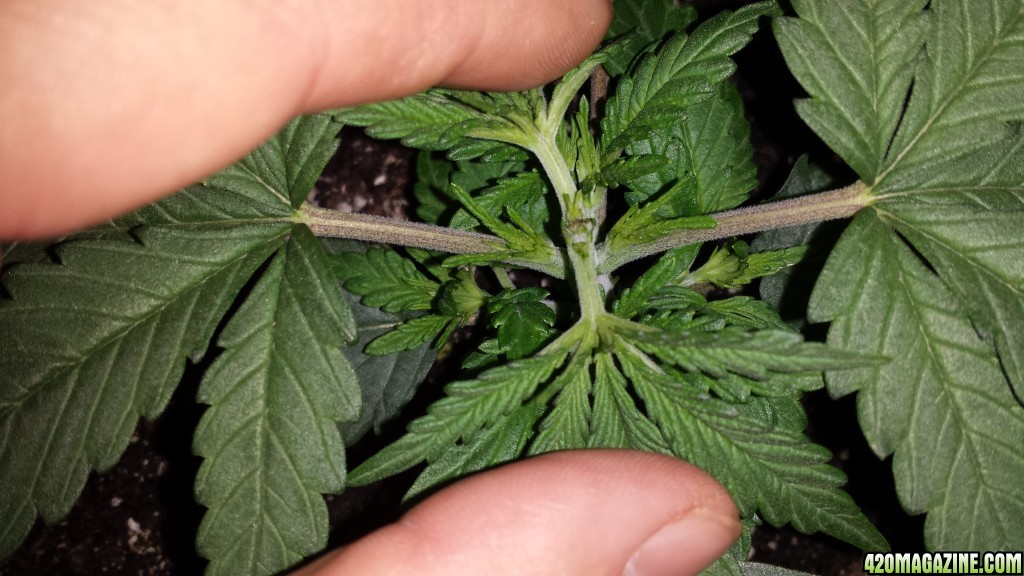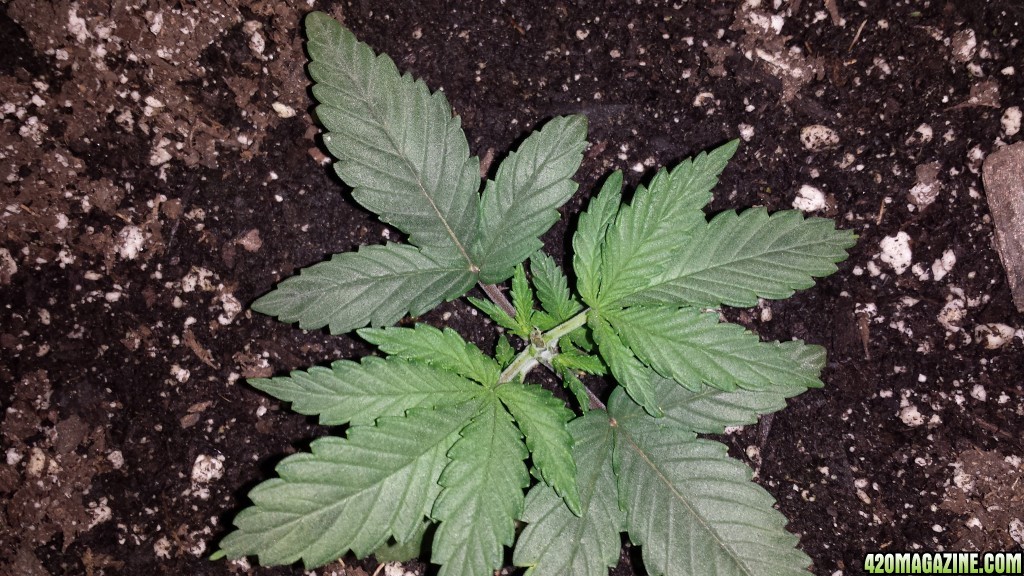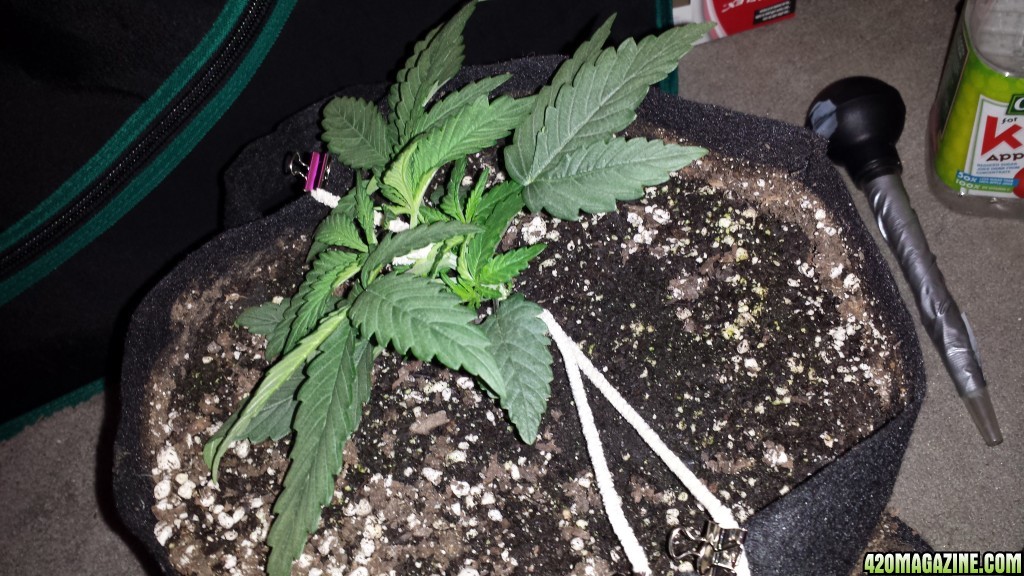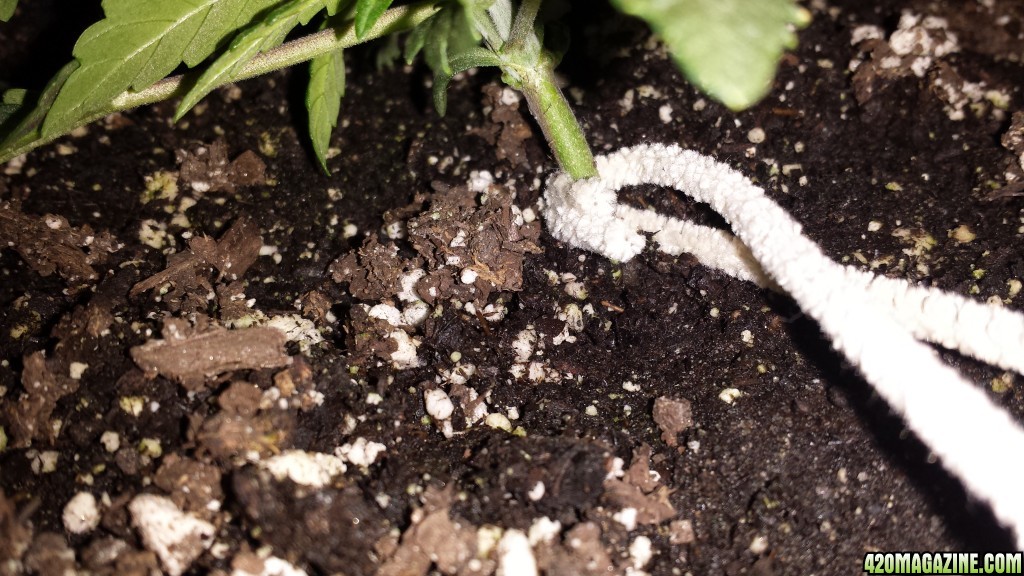Here is a link to one of the BEST research I have been able to read. Its here on our own 420 site so No worries
A top nutrient study - Which is the best? Produces most?
That link is not only a good place for EJ info but a great place for Nute info period. If you use FOX FARM, GENERAL ORG. Neptune's Harvest, Advanced nutrients Sensi line, Bio-Canna, it might be worth the read. Or if your undecided on what your going to use. It might be worth the read. But for now I will cut and paste the EJ info for anyone thinking of using.
First and foremost, I would like to give credit to whom ever wrote this originally, and thanks to
ledtester for posting it here on 420
Ok now for the info,
It's important to understand some general organic microbial life. Microbes make up the majority of soil life in nature. Bacteria, fungus, nematodes, algie and many other micro organisms live in soil. In these tests I was primarily concerned with Bacteria and fungus. Bacteria are usually single celled creatures that prefer generally higher pH environments. There are literally billions and billions of them, some thrive in low oxygen soil (anaerobic) and others need air to properly thrive (aerobic). Bacteria need water to live producing a slime of sorts around them that binds the substrate together and preserves some moisture required for it's survival. They are extremely good at decomposing organic matter by producing enzymes that break down nutrients. The enzymatically digested nutrients are then absorbed back into the bacteria. Fungus is similar in that it also uses enzymes to decompose matter but has some unique characteristics. First, it produces Chitin. This is the same biological substance used in crab and various sea shells and the exoskeletons of many insects. Chitin gives fungus stiffer and a more resistant cellular make-up than bacteria. These fungus cells combine into chains and have passageways between them. This allows fungus to transport fluids from one end of it's chain to the other. I'm sure many of you have heard of Mycorrhizal fungi for example, which encircles and sometimes attaches to root systems searching for food and water on it's own by expanding beyond the plants regular capacity, then transports the nutrients back to the roots. Root's will exchange these nutrients for carbohydrate rich fluids called Exudate's. These exudate's are imperative to producing chitin. The important feature here is that the plant chooses when to exchange the nutrients hence giving a healthy plant more natural control over it's own growth. It also means that this fungus will become an extension of root systems leading to more efficient nutrient absorption. When fungus and bacteria absorb a nutrient, that nutrient becomes locked inside them. They don't release this nutrient until exudate exchange or death. This means nutrients have more of a lasting and natural effect creating a humus rich, nutrient available medium. There are books based on this subject so I won't get to deep into it, but I feel promoting a strong microbial life in organic applications is my primary priority. I'll frequently refer to this microbial life, explaining it further. Plants are not totally depended on these methods of nutrient absorption. They can produce they're own enzymes also, just not nearly as efficiently.
I also think understanding " Brix " content can have benefits in comparative tests. Brix is a measure of a combination of various amino acids, oils, proteins, flavonoids, minerals and primarily sugars/carbohydrates within a plant's tissue. Many vineyards and fruit farmers use Brix levels to determine flavor and nutrition values in grapes and fruit. Brix levels can expose some important features in regards to marijuana. It is a great way to monitor your plants health measured using a refractometer. Much in the same way light beams change direction under water a refractometer measures the change in light direction sent through a sample of extracted fluid from the plant. The larger the direction change, the higher the Brix. Basically, as nutrient absorption occurs (specifically carbs and sugars), measured Brix levels rise. If the appropriate ingredient is poorly absorbed Brix levels will remain the same or lower. With that theory in mind we can better determine how well different nutrients react with Marijuana. Interestingly, organic mediums and organic solubles produce much larger Brix numbers. Plants with high Brix numbers are healthy, more pest resistant and full of nutritional value. Essentially the healthier plant is naturally more resistant to pathogens such as insect infestation. Plant eating insects lack the internal organs to properly digest certain sugars (specifically a liver). Undigested sugars will eventually ferment into alcohol killing the insect or disrupting it's digestive system. High Brix typically implies high sugar content hence are generally more unattractive to these bugs. Weak, infested or diseased plants always have lower Brix numbers. High Brix will improve taste, resin production, odor and potency. I feel it's an underestimated value in regards to plant management. If your interested look into Dr. Reams.
Earth juice full line = Grow (2-1-1) - Bloom (0-3-1) - Microblast - Catalyst (0.03-.01-1) - Meta-K (0-0-10) Hi Brix Molasses
The "Grow" uses blood meal, steamed bone meal and bat guano as the primary source for nitrogen - 50% of which in non-soluble. This non-soluble nitrogen is imperative in feeding beneficial fungi and bacterial life in the medium. It's very inconsistent from one batch to the next. Occasionally, it's solid as Play-doe. Naturally occurring Sulfate of Potash is used providing appropriate amounts of potassium. Sea kelp (Ascophyllum Nodusum) provides various growth regulators and trace elements. High quality Molasses, a secret weapon in many nutrients is also included. Between Kelp and molasses the Brix levels here are through the roof as both these ingredients are packed with carbohydrates. This product produces tremendous vegetative growth developing a solid foundation for flowering. During the first 6 weeks of veg this schedule led the pack ratings wise and numerically.
The "Bloom" contains no direct form of nitrogen. Rather than blood meal it uses fossilized seabird guano. Normally seabird guano is high in nitrogen but when "fossilized" it breaks down into primarily a phosphorus and potassium rich substance. Other than that, the ingredient's included are the same as Grow in different ratios. Grow and Bloom are weak when used alone. They are designed to be mixed together through-out the entire vegetative and most of the flowering cycle or deficiencies will occur.
The "Micro blast" is a sulfate based formula supplying various micro nutrients. Understanding some soil micro-biology is important to understand the effectiveness of sulfates. In a healthy, living substrate there are sulfur - oxidizing bacteria (they make energy through reacting with sulfur) that help break down organic material producing soluble and easily available nutrients for your plants. This process has essentially already taken place in regards to sulfates and Micro blast, creating an almost chelated effect. The included nutrients and minerals are readily available with-out much assistance from microbial life. In early flowering under heavy growth demands I felt Micro blast was weak in Zinc and Magnesium.
"Catalyst" is an oat bran and sea kelp based nutrient. It is the most popular of the E.J. products. The Catalyst is exactly that. It assists in building soil structure, micro-bial life (specifically beneficial fungal life), organic material break down, contains growth simulators and various hormones. It is an absolutely vital component to the E.J. line and again, sends Brix levels soaring. It contains a tremendous amount of high quality, plant available molasses, and amino acids feeding microbial development.
"Meta K" is also an important addition specifically in relationship to cannabis. Marijuana demands large amounts of potassium in flowering. This product provided more than enough and easily is over applied. I found less amounts spread out over the entire cycle worked excellent.
Earth Juice products work best if applied making an air infused "tea". This tea will explode with microbial life and creates a "living foam" on it's surface. I pre-mix 24 to 48 hours in advance of feeding, heating the solution mildly to 85 degrees. This turns into a rich mixture of balanced, active microbes. Between this tea, the Catalyst and some vital non-soluble nitrogen the bacteria and fungal life within the medium thrives. This soil-life will feed your root zone and in turn feed your plant. With Earth Juice you focus more on maintaining a healthy living medium. The "Grow" gets premixed in a small container so I can viciously shake the hell out of it - then add it to the solution. This tea can last some time with air being pumped in - sometimes a week. It's time consuming but well worth the effort. pH must be balanced prior to application. The Macro nutrient solutions are non pH buffered. It WILL be low. You can also simply pre-mix before application - but mix thoroughly.
This cycle has ridiculous bud development. The diverse ingredients here react excellent with Marijuana. Earth juice uses the highest quality guano available and the molasses is top notch. Smell and flavor are far superior than most other tests. Crucial mid flowering stages with Earth juice responded very well to additives. Cal/Mag in various forms helped firm up buds. Enzymes specifically and beneficial's made nutes more available and increased absorption rates. See the Additive section for more specific results. Final product was phenomenal, buds were swollen and furry with trichromes. I have a long history with Earth juice and expected it to finish high in this overall test. It remains my primary soluble nutrient today. It was second only to Advanced Nutrients in production weight but far better quality in my opinion. The smoke produced simply tastes the best among these cycles and potency is top of the list. I cannot recommend this cycle enough if your interested in organics. When properly applied Earth juice will match any nutrient application out there.
Here is the schedule the guy used for his testing. Its similar to what I am going to use. Although he used other stuff with it that I do not have so I will have to adjust accordingly.
-------------Catalyst--------Micro---------Grow---------Bloom-------Meta K-------------Hi Brix
week1 veg-----5ml----------5ml-----------5ml
week2 veg----10ml----------5ml-----------5ml
week3 veg----10ml----------5ml-----------10ml----------------------------------------5ml
week4 veg----10ml----------5ml-----------10ml----------------------------------------5ml
week5 flower--10ml----------5ml-----------10ml-----------5ml---------2.5ml---------5ml
week6 flower--10ml----------5ml-----------10ml---------10ml----------2.5ml--------5ml
week7 flower--10ml----------5ml-----------10ml---------10ml---------2.5ml---------10ml
week8 flower--5ml-----------5ml-----------15ml---------15ml---------2.5ml---------10ml
week9 flower--5ml-----------5ml-----------15ml--------20ml---------2.5ml----------10ml
week10flwer----------------5ml-----------10ml-------- 25ml---------2.5ml-----------10ml
week11flwr-----------------5ml------------------------20ml ---------------------------10
week12 FLUSH
Repeat week 3 for veg or 10 for flower extension
Hi-Brix (0-0-3) is made by Earth Juice. It is similar to Black-strap Molasses but contains more plant appropriate amino acids and plant extracts
Earth juice specifically is notoriously poor at blending with RO filtered water. It tends to prefer harder water. I simply leave my tap water out for a few days and try to bubble air through it for 24 hours prior to mixing anything. I also pre-mix my grow separately and then add it to the solution - it can be fairly solid sometimes and needs some extra shaking up. Microbial life with this schedule does exceptional and the Hi-brix really helps feed the root zone.
Anyway there you have it.
I personally am using the stuff for the first time. So I think I will be a good example of how well this stuff works for a beginner. If anyone has anymore info on EJ please feel free to post a link or copy the info and paste it.

















